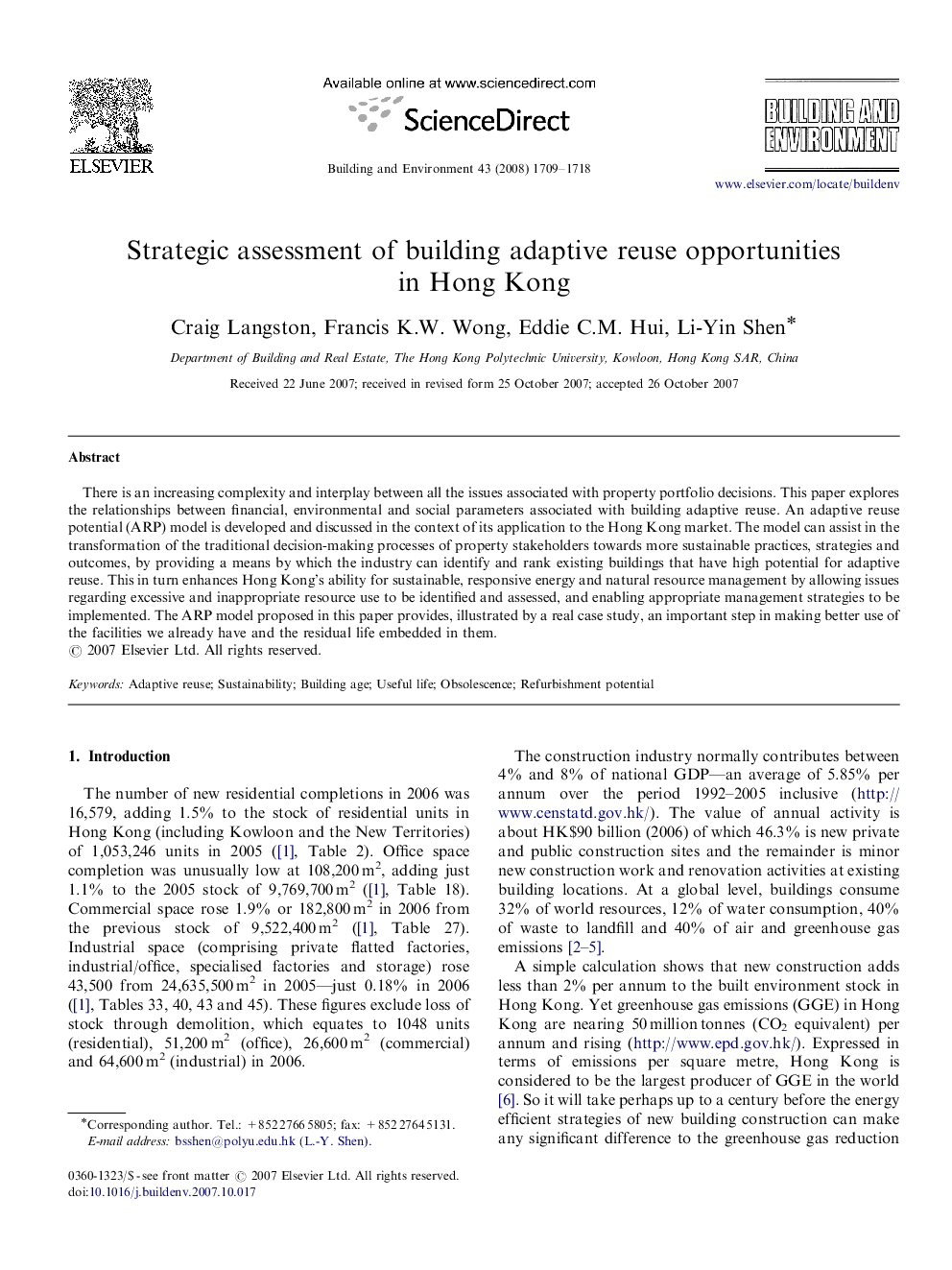| Article ID | Journal | Published Year | Pages | File Type |
|---|---|---|---|---|
| 249759 | Building and Environment | 2008 | 10 Pages |
There is an increasing complexity and interplay between all the issues associated with property portfolio decisions. This paper explores the relationships between financial, environmental and social parameters associated with building adaptive reuse. An adaptive reuse potential (ARP) model is developed and discussed in the context of its application to the Hong Kong market. The model can assist in the transformation of the traditional decision-making processes of property stakeholders towards more sustainable practices, strategies and outcomes, by providing a means by which the industry can identify and rank existing buildings that have high potential for adaptive reuse. This in turn enhances Hong Kong's ability for sustainable, responsive energy and natural resource management by allowing issues regarding excessive and inappropriate resource use to be identified and assessed, and enabling appropriate management strategies to be implemented. The ARP model proposed in this paper provides, illustrated by a real case study, an important step in making better use of the facilities we already have and the residual life embedded in them.
